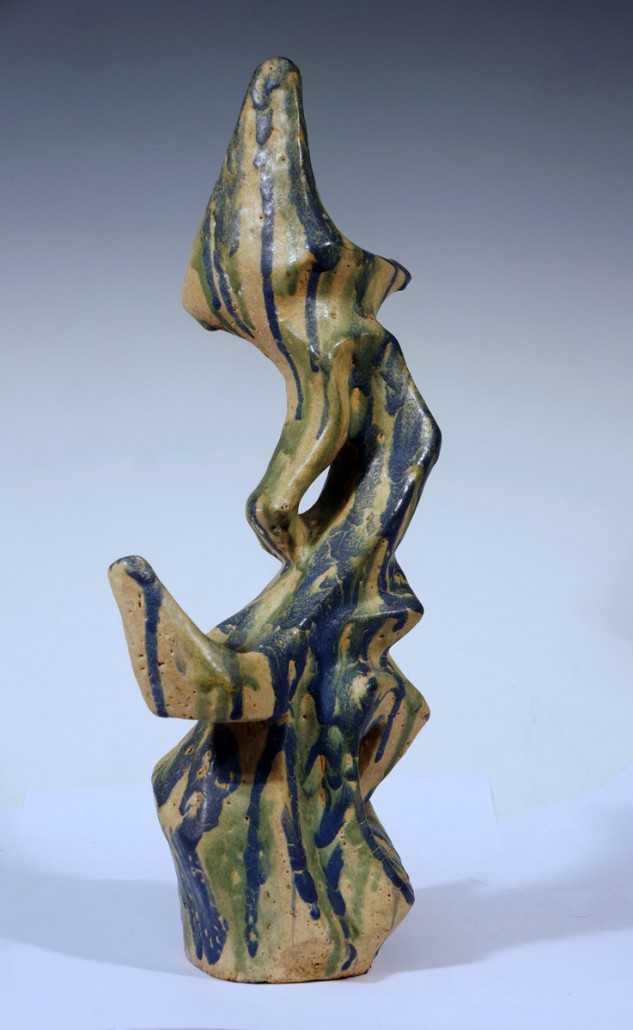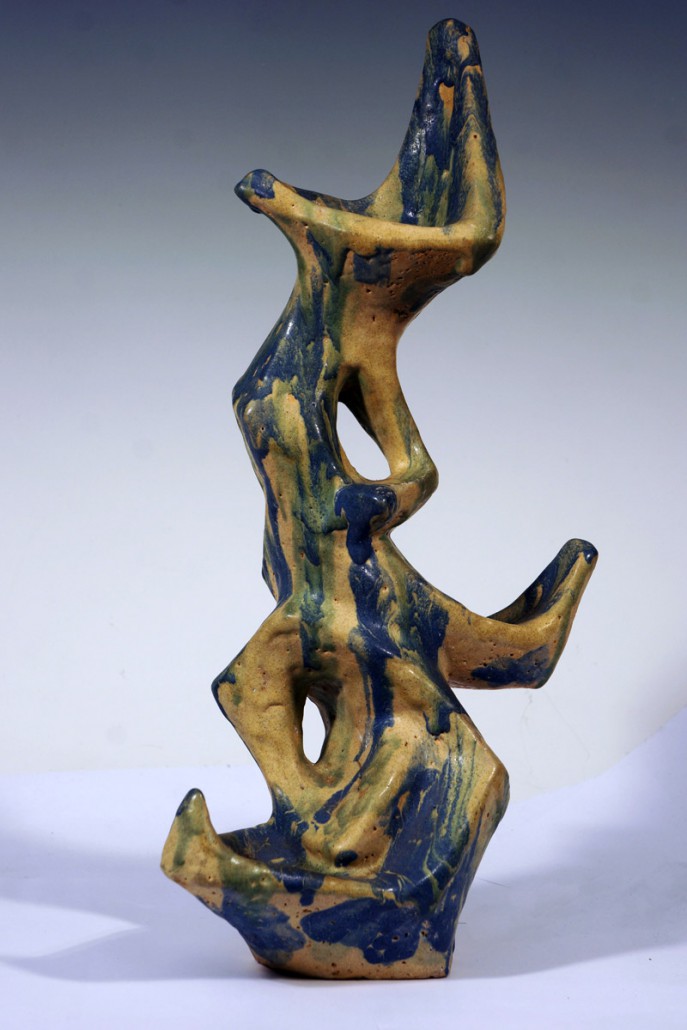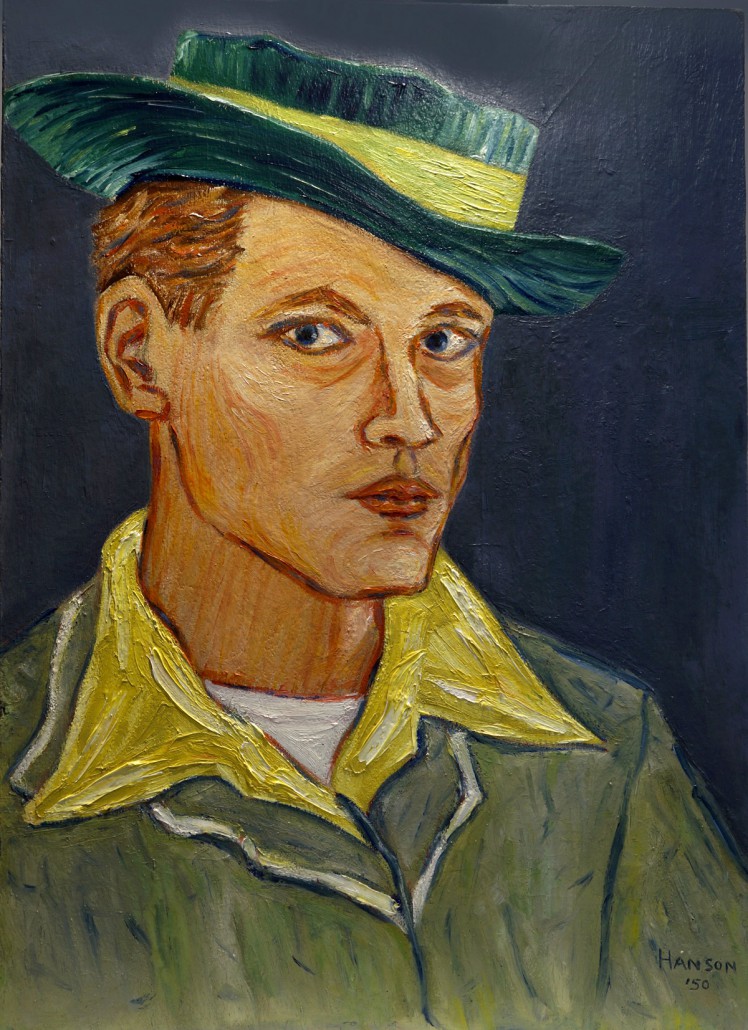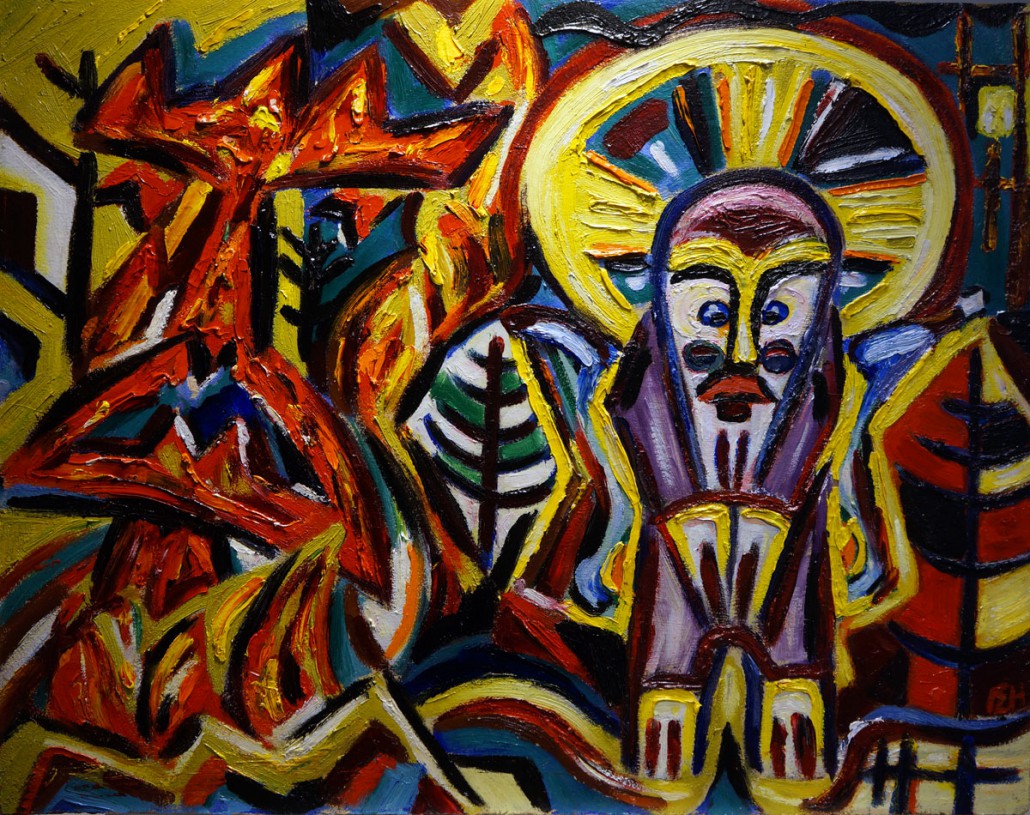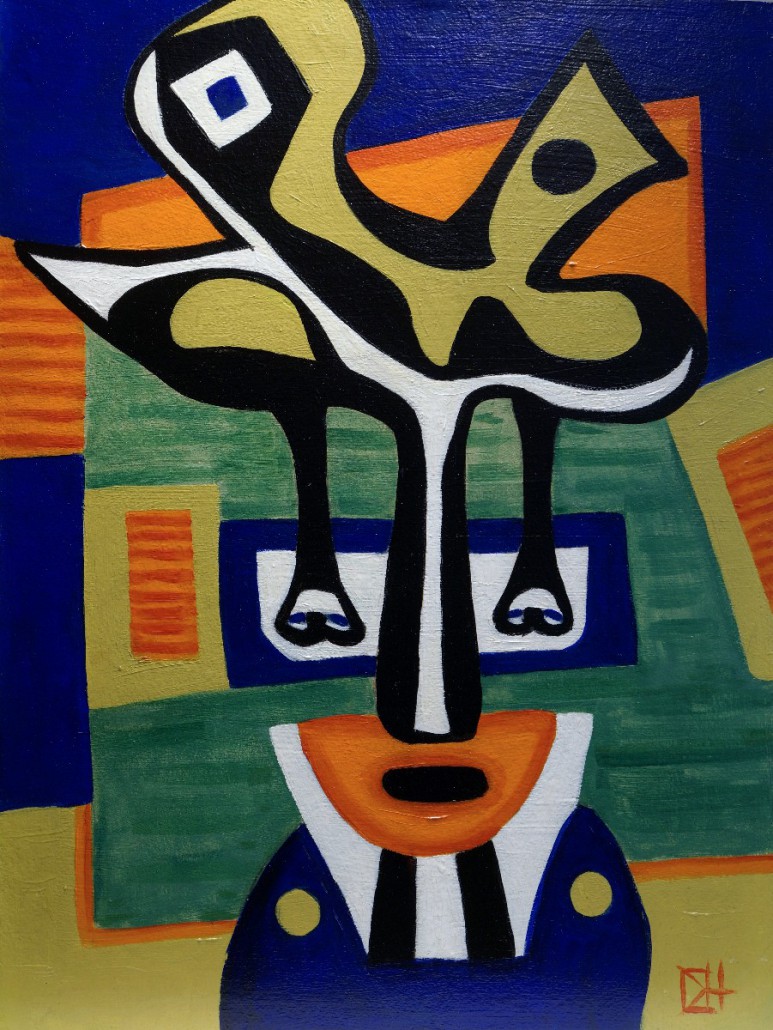Duane Hanson
1925 – 1996
American School
Selfportrait, 1949
Oil on board. 58x43cm. Signed and dated lower right: Hanson/’50
Provenance: 1. Private collection: the heirs of Sperry Andrews III, Wilton, Connecticut.
Candlestick, 1949
Ceramic. Height: 40cm. Cream colored and olive green glaze.
Signed on the underside: Hanson.
Provenance: 1. Private collection: the heirs of Sperry Andrews III, Wilton, Connecticut.
Biomorphic composition, 1950
Oil on board 57x43cm. Monogrammed on lower: DEH
Inscriptions on verso : Monogramme DEH/DuaneEHanson/Feb. 1950 Cream colored and olive green glaze.
Provenance: 1. Private collection: the heirs of Sperry Andrews III, Wilton, Connecticut.
Duane Hanson’s ultra-realist sculptures of workmen and housewives crystallize the the quotidian activities of the working classes in America’s heartland. They are permanent fixtures in the landscape of American Pop Art and examples are found in the worlds great museums of contemporary art. However, very little is known about Hanson’s early years. How did the artist come to produce his remarkable work of the 1960s ? The present documents are rare extant examples which shed light on the artist’s personal odyssey. All esthetic considerations aside, their provenance is fascinating in its own right. Sperry Andrews III was a landscape artist based in Wilton, Connecticut. He lived much of his professional life on the Weir Farm (the ancestral home of the painter, J. Alden Weir and his son-in-law, the painter and sculptor, Mahonri Young.) It is currently the only national park in Connecticut. In the early 1950s, Sperry taught at a school/exhibition facility in the area called the Silvermine Gallery. There, he met a fellow instructor who was hired as art teacher for the local junior high school. He had freshly graduated from the Cranbrook Academy in Michigan, a school which is considered one of the cradles of American Modernism (Ray and Charles Eames, the Saarinens and Florence Knoll were graduates), a certain Duane Hanson. The two artists became good friends, and Hanson was a frequent visitor to the Weir Farm. Hanson also mounted his very first professional exhibit at Silvermine in 1952. Hanson did not stay in the area for very long. He moved to Germany shortly afterwards, and remained there in the decade that followed, teaching and showing his work. There were four early works by Hanson in the Sperry collection. Three of them, paintings in varied styles: a self-portrait, which is an affectionate homage to Van Gogh’s portrait of Armand Roulin; a deeply troubled, highly colored composition in thick impasto entitled « War and Peace », which looks like De Kooning on acid; and a graphic work, at once geometric and biomorphic. Hanson’s ceramic candlestick is substantial in size, a virtually unique document of the artist’s little known early period. An allusion is made to the genre in Pamer’s article, but without the support of an illustration (probably due to the fact that no extant example was located). The present work is remarkably successful. A decorative object with three placements for candles, it is a hybrid (as Hansons later productions would be): an abstract sculpture, original, surprising and formally compelling, the surface of which has been « action painted » with a complicated network of criss-crossed, green lines. The ceramic, both a product of fire and (as a candle holder) a symbolic repository of it, relates to Hansons painting of « War and Peace » of the same period, particularly to his spiky, diabolical figure of War, painted in thick impasto and in fiery oranges and yellows. Hanson was clearly throwing off the stylistic onus of Abstract Expressionism, the demons of which he would exorcise by the early 1960s.
In Laurence Pamer’s article published in a catalogue by theFort Lauderdale Museum of Arton the occasion of their Duane Hanson retrospective in 1998 (which eventually landed up at the Whitney), whether through neglect or destruction, the artist’s early work is exceedingly rare. Any vestige of it is of the highest interest, since it not only sheds light on the process which Hanson underwent, but also that
of a generation of post-war artists who were seeking new modes of expression. Art lovers know that that road led to Pop Art, but are perhaps less aware of what took place along the way and how exactly the artists arrived at their destinations.

